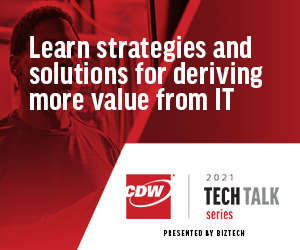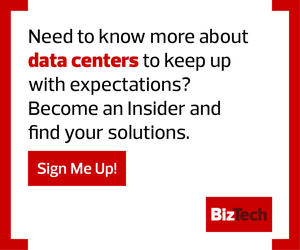Whatever their specific situations, Mohan says, companies should make infrastructure investments with an eye toward providing business units with the right performance to meet the needs of customers.
“If you haven’t modernized or looked at these new technologies in the past couple of years, now is a critical time to at least evaluate them,” Mohan says. “We’re at the cusp of this big change, where a number of technologies that have worked for years or decades are suddenly becoming legacy. Having IT infrastructure that supports a good customer experience and good business outcomes is an absolute must.”
The Right Infrastructure Tools for Your Business
The public cloud made sense for most of United’s workloads for several reasons, says Campbell. “There’s a cost associated with the infrastructure,” he says. “We do a lifecycle refresh on everything from our point-of-sale equipment to PCs, and there are capital dollars associated with that refresh. When you come up to the end of the lifecycle of some of the more expensive data center items, you have to look at the dollars associated with replacing that item and ask, ‘Does it make sense to do it this way, or does it make sense to look at the cloud for a more robust and agile environment?’ Not only are you eliminating the check for the hardware, but you’re eliminating the need to maintain and pay for facilities to house that equipment.”
While United, which owns 95 grocery stores in Texas and New Mexico, is migrating much of its data center environment to Microsoft’s Azure cloud platform, the company has found that a number of critical applications will perform better on-premises. IT is primarily relying on HP DL360 Gen9 and Gen10 servers to power those applications.
WATCH: See how businesses are using new applications and tools to prepare for the future of work.
For instance, the company is opting to keep its desktop management application in-house. “It’s a very ‘chatty’ application,” Campbell says. “It communicates with every desktop, every laptop, thousands of pieces of hardware across our enterprise on a daily basis. The internal hardware resources needed to run the application are low, but bandwidth utilization is high.”
By contrast, the company is moving homegrown database applications to Azure, both for performance and flexibility reasons. “You’re able to add resources in a much more efficient manner,” Campbell says. “On-premises, you have a finite set of resources. You can always add more, but you can’t do that in 30 minutes. The cloud allows us to react more quickly and add resources faster, and then as time goes on, you might be able to pull back some of those resources if necessary.”
How to Support the Speed of Business
Salt River Project, a nonprofit power and water company based in Tempe, Ariz., with more than 5,000 employees and 1 million customers, was looking for ways to efficiently capture data for application troubleshooting and performance and security tools across the organization’s four data centers. To address the issue, the organization turned to Cisco Nexus Data Broker with Cisco Nexus switches.
“Before any of this, when we had an issue with an application, we would have to figure out what the application was talking to,” recalls Ryan Johnston, manager of network management for SRP. “Then we had to configure the routers and switches to send copies of the data, then wait for the event to happen again. It’s not very effective when you’re trying to troubleshoot a problem.”













